The consensus view of a “sure-thing” seems to be unraveling yet again.
The Fed has stopped buying Treasuries and has even started selling them on the open market. If ever there was a sure-thing, we should surely see a sell-off in Treasuries and a corresponding rise in rates. Right?
Not so fast…
During the summer and fall of 2016, we kept hearing about how interest rates were going to rise. IEF, the ETF for the 10-year Treasury Note, dropped from a high of around $111 in July 2016 and hit its Stock State Indicator (SSI) Stop signal at $105 a year ago today (November 10, 2016).
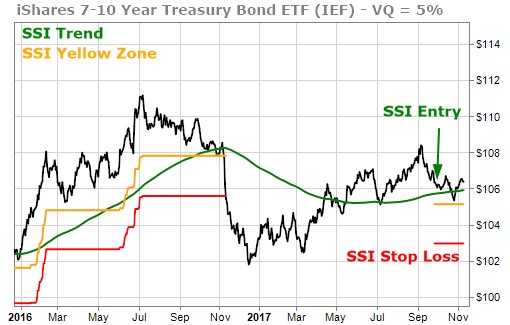
IEF continued to move lower, bottoming out in mid-December below $102. The same time the Fed began raising short-term rates. It looked as if the rout was on in US Treasuries.
So far, so good for the consensus view.
But then a funny thing happened. IEF and the underlying T-Notes began rising in price and interest rates have actually dropped over the past 11 months. IEF triggered a new SSI Entry signal in late September.
And this sets up an interesting opportunity in a sector that has historically done well during periods of falling interest rates.
Your first thought would be the utility sector and, yes, that sector has performed well while rates have continued to fall.
XLU, the Select Sector ETF, also hit its SSI Stop on November 10, 2016, but recovered and triggered a new SSI Entry signal on March 1 of this year. It hit a new high yesterday.

There’s another sector that has done well historically in a low interest rate environment – consumer staples. XLP is the Select Sector ETF for the consumer staples sector. It triggered a SSI Entry signal more than 2 years ago in October 2015.
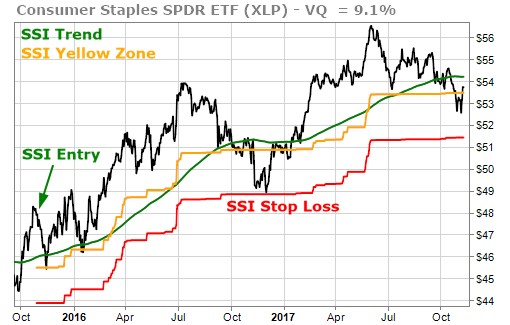
XLP nearly stopped out when the Fed announced the end of its Treasuries purchase program at the end of 2016. Then as rates unexpectedly started to fall, XLP started to rise and hit a high in June 2017.
Recently it dipped into the SSI Yellow Zone and rose back out to the SSI Green Zone. That’s a sign that we like to pay attention to.
XLP is the least volatile of all the sector ETFs. It has a Volatility Quotient (VQ) of only 9.1%. It includes low-risk stocks such as Coca Cola (10.3% VQ) and Proctor & Gamble (10.7% VQ).
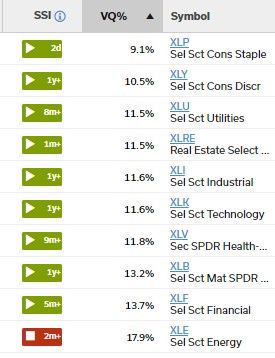
The most stable one-year time cycle forecast is showing that XLP could begin rising now through April of next year.
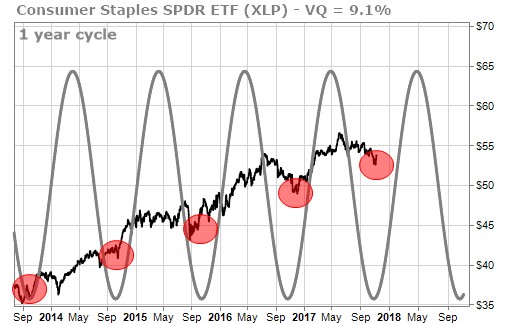
And XLP has a positive correlation with rising Treasury prices (falling interest rates).
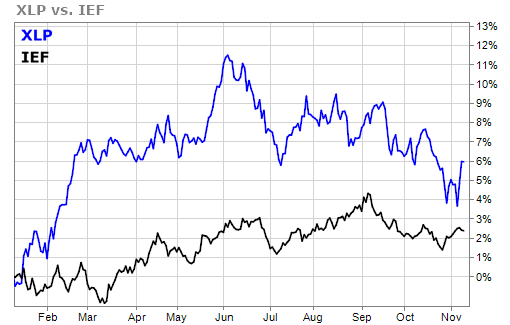
With interest rates trending lower, this could be a good time to see if XLP has a place in your portfolio. Using the SSI Stop price of $51.43, this trade currently has only 4.29% of risk.





